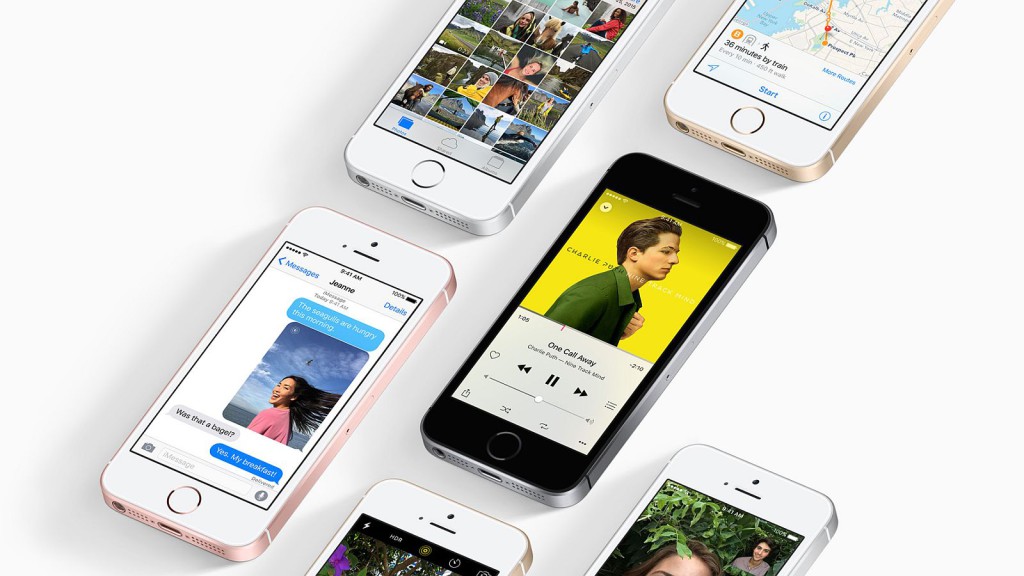Big news everyone: Apple last night launched its new smartphone, and it’s a big step backwards for a little leap forwards. I’m talking about the iPhone SE.
The phone is effectively a remastered, Game of the Year version of the iPhone 5S, using some iPhone 6S internals (notably the A9 CPU) but shoving them into the latter’s shell. It might sound stupid, but there’s good reason for this. Those stubborn 35% of Apple users who have yet to graduate to a larger than 4.0-inch screen size are probably rubbing their hands together with glee, so think of the SE as Apple’s gentle public hurry up.
No ad to show here.
“A big step for small” is its marketing quip, and that’s largely what the iPhone SE is. The company isn’t wrong to say that it’s the fastest 4.0-inch smartphone in the business, and it probably is the most advanced 4.0-inch device in the business too. But is it the best value for money?
Related: iPhone 6C or iPhone 5SE: Does a baby iPhone make any sense in 2016?
The specs sheet certainly gives that impression.
The iPhone 6S’s dual-core Apple A9 processor makes its way into the phone, alongside the M9 motion processor (to aid health tracking, and the like), 2GB of RAM and 16GB of internal storage. Those latter two points clearly suggest that this is no flagship. There’s a 64GB option but it’s US$100 more (we’ll get onto the pricing later).
Vote in our poll: are you planning to buy the iPhone SE?
Beyond that, the cameras are spruced up to 12MP at the rear and an archaic 1.2MP up front. The former lets users record in 4K too albeit at 30 frames a second, while the front camera should get by as a Face Time camera and not much more. Live Photos is also included as well, which allows users to snap a few frames before and after an image giving it the impression of motion.
The 4.0-inch screen will be called into action here, but its resolution — although giving a fairly high pixel density — is lacklustre. It’s just 1136×640. This may help to save battery though, and this phone is going to need all the help it can get. At 1642mAh, its smaller than the iPhone 6’s rather meagre battery. It’s smaller than most TV remote batteries.
Regardless, the phone runs iOS 9.3, boasts NFC for Apple Pay with TouchID, uses WiFi 802.11 AC (the fastest around) and features LTE Cat 4 support for speeds up to 150Mbps.
So, that’s the whole shebang. But the price is alarming, especially for those hoping for an emerging market friendly iPhone.
It starts at US$399 for the iPhone SE with 16GB, and balloons to US$499 for the 64GB model. If you upgrade from an older iPhone, prices will start at US$17 per month, which isn’t all that pricey.
Of course, on paper, it’s massively overpriced, but Apple’s relying on two things to push these out the door. Firstly, those aforementioned upgraders looking for a small phone akin to an iPhone 5S but faster. Secondly, its lack of competition in the space, almost entirely. Think about it: the smallest competitor at this super mid-range level is probably the Sony Xperia Z3 Compact at around R6500. Yes, the older generation Xperia but to be fair, this is a non-S iPhone.
We currently have no pricing or availability information for South Africa, but expect the phone (thanks to the strength of the rand) to cost no less than R6000.
The phone goes on preorder internationally from 24 March, with shipments commencing on 1 April.
So is it the best value for money phone on the market? Let us know in our poll, or drop a comment in the section below.
Edit (22 March, 9.34am): rectified the preorder and shipping dates.
Edit (22 March, 4.35pm): clarified the iPhone SE’s likeness to the iPhone 6S in terms of specs, including SoC and RAM figures.
